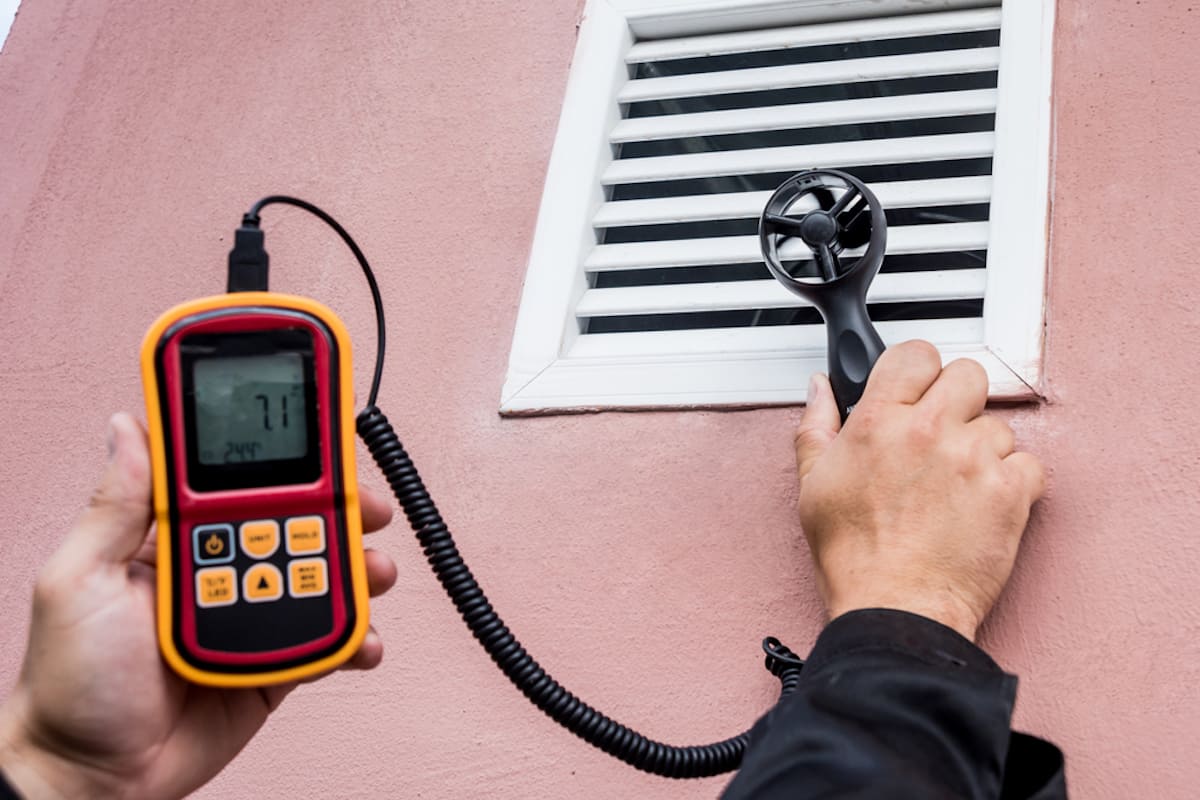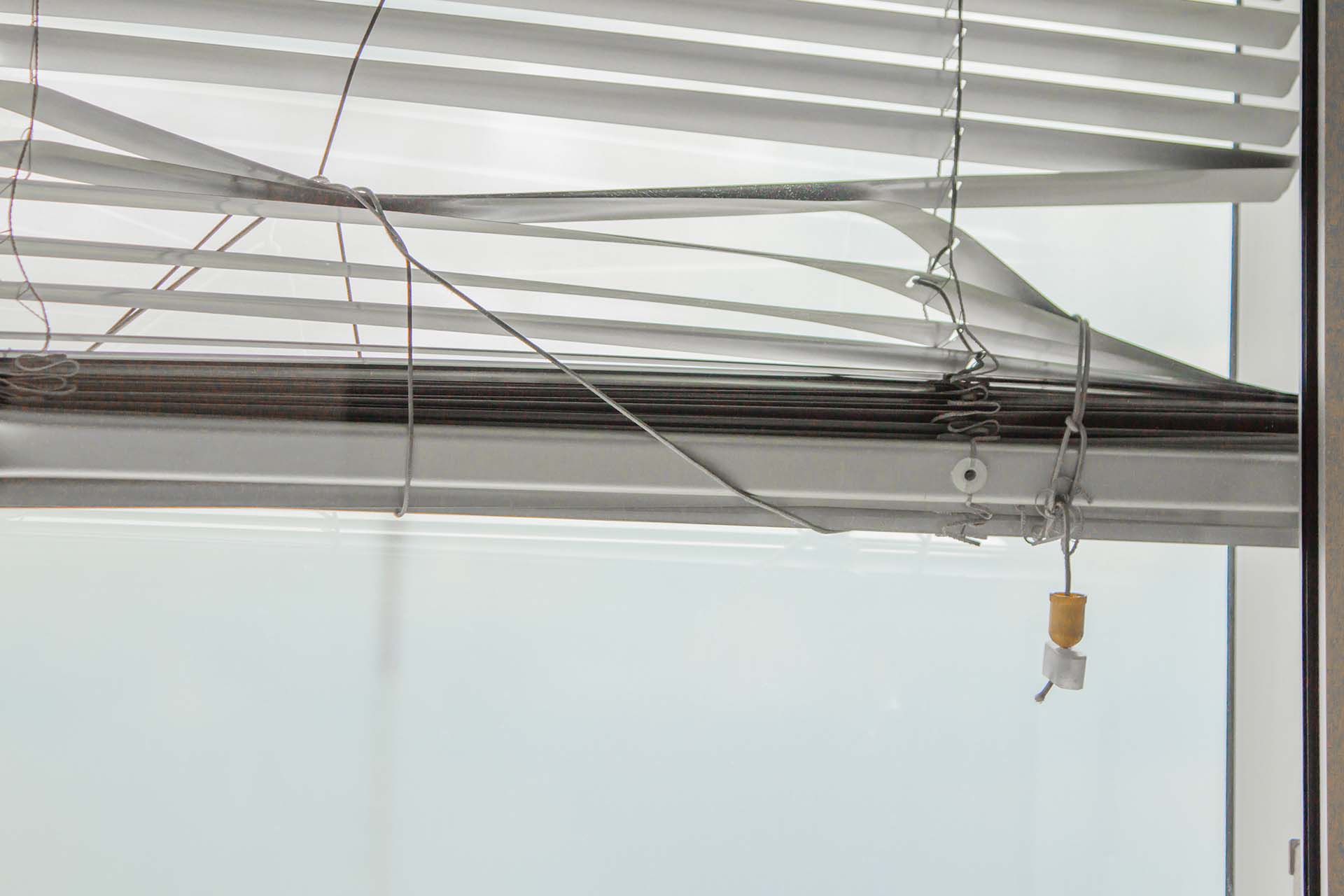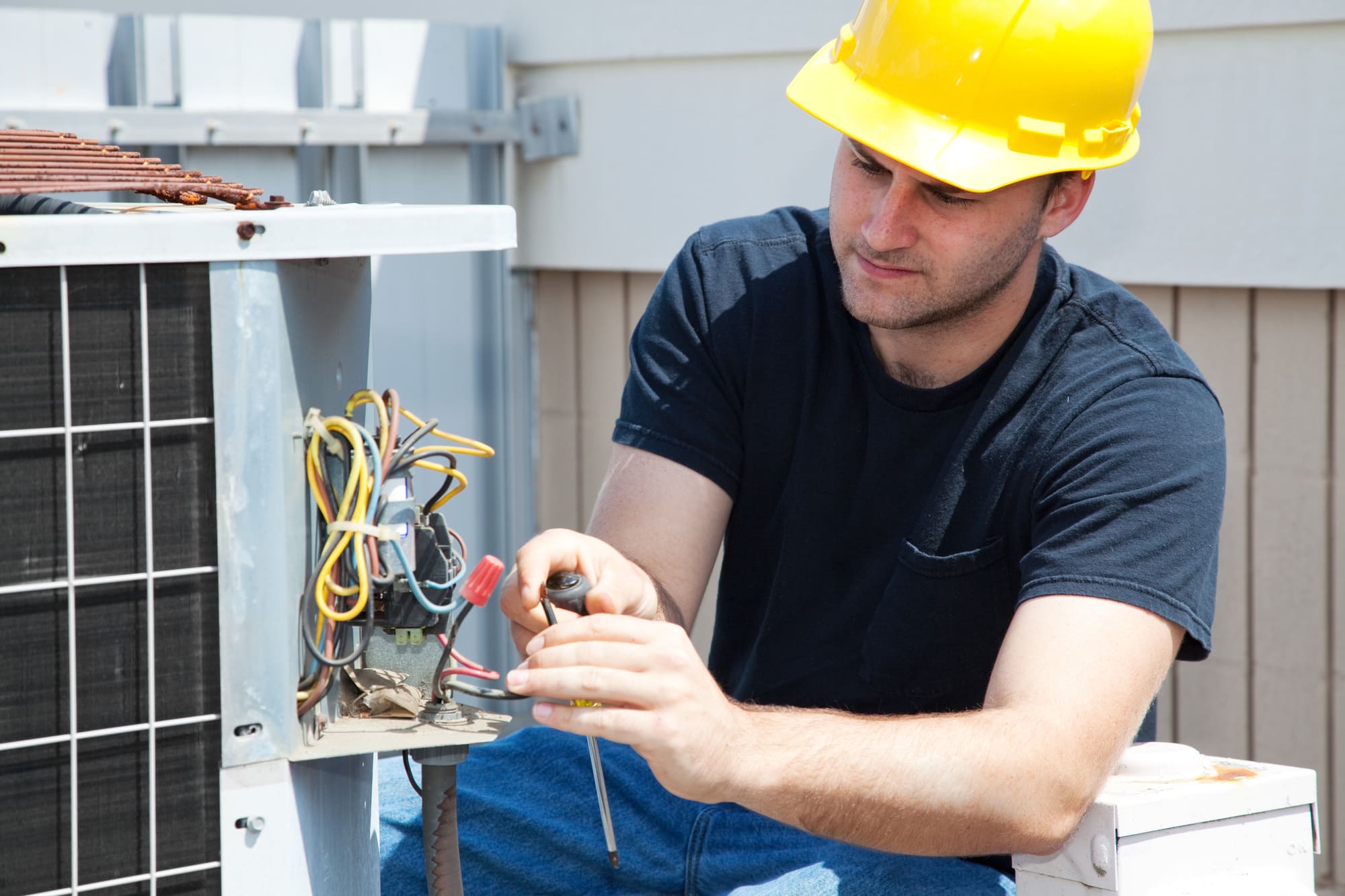

Articles
How To Measure Airflow In HVAC
Modified: October 20, 2024
Learn how to measure airflow in HVAC systems with our informative articles. Find out the best methods and tools to ensure optimal performance.
(Many of the links in this article redirect to a specific reviewed product. Your purchase of these products through affiliate links helps to generate commission for Storables.com, at no extra cost. Learn more)
Introduction
Proper airflow is a critical aspect of an HVAC (Heating, Ventilation, and Air Conditioning) system’s performance. It directly affects the comfort, energy efficiency, and overall functionality of the system. As an HVAC professional or someone interested in maintaining an optimal indoor environment, it is crucial to understand the importance of measuring airflow in HVAC systems.
Measuring airflow provides valuable information about the performance of the system, helps identify potential issues, and allows for necessary adjustments and optimizations. By accurately measuring airflow, HVAC technicians can ensure that the system is delivering the right amount of conditioned air to each space, maintaining a comfortable temperature, and maximizing energy efficiency.
In this article, we will explore the different methods available for measuring airflow in HVAC systems. Each method has its own advantages and considerations, depending on the specific application and requirements.
Key Takeaways:
- Accurate airflow measurement is essential for maintaining optimal comfort, energy efficiency, and equipment performance in HVAC systems. Different methods such as anemometers, pitot tubes, and flow hoods offer unique advantages for achieving precise airflow readings.
- When selecting an airflow measurement method for HVAC systems, consider factors such as application, accuracy requirements, cost, ease of use, system compatibility, and maintenance needs. By carefully evaluating these factors, HVAC professionals can ensure accurate and reliable airflow measurements for optimal system performance.
Read more: How To Motorize Blinds
Why is measuring airflow important in HVAC systems?
Measuring airflow in HVAC systems is essential for several reasons. Here are some key reasons why it is crucial to accurately measure airflow:
- Optimal Comfort: Proper airflow ensures that conditioned air is evenly distributed throughout the space, providing consistent temperatures and preventing hot or cold spots. By measuring airflow, HVAC technicians can determine if the airflow is balanced, allowing them to make adjustments and ensure optimal comfort for building occupants.
- Energy Efficiency: Airflow directly impacts the energy efficiency of an HVAC system. Insufficient airflow can result in wasted energy, as the system works harder to reach the desired temperature. On the other hand, excessive airflow can lead to unnecessary energy consumption. By measuring airflow, technicians can identify any inefficiencies and make necessary adjustments to maximize energy efficiency.
- Equipment Performance: Measuring airflow allows HVAC professionals to assess the performance of the system’s components, such as fans and air filters. If airflow is restricted, it can strain the components and reduce their lifespan. By monitoring airflow, technicians can detect any issues early on and take corrective actions, ensuring optimal performance and prolonging the life of the equipment.
- Air Quality: Proper airflow is essential for maintaining good indoor air quality. Insufficient airflow can lead to the accumulation of pollutants, allergens, and stale air, impacting the health and well-being of building occupants. Measuring airflow helps ensure that the right amount of fresh air is being circulated and that air filters are effectively removing contaminants.
- System Troubleshooting: Measuring airflow allows HVAC technicians to diagnose and troubleshoot system issues more effectively. If there are inconsistencies in temperature or airflow, measuring can help identify the root cause. By pinpointing specific areas of concern, technicians can perform targeted repairs or adjustments.
In summary, measuring airflow in HVAC systems is essential for achieving optimal comfort, energy efficiency, equipment performance, air quality, and effective troubleshooting. It provides valuable insights into the system’s performance and enables technicians to make informed decisions and necessary adjustments to ensure optimal operation.
Different methods for measuring airflow in HVAC
There are various methods available for measuring airflow in HVAC systems. Each method has its own advantages, considerations, and suitable applications. Here are some commonly used methods:
- Anemometer: An anemometer is a handheld device that measures air velocity. It can provide accurate airflow readings in both residential and commercial HVAC systems. By measuring the air velocity at various points, technicians can calculate the airflow rate. Anemometers are portable, easy to use, and relatively affordable, making them a popular choice for airflow measurements in HVAC systems.
- Pitot tube: Pitot tubes are used to measure both air velocity and pressure differentials. They consist of a tube with a small opening (pitot tip) in the airflow and a pressure gauge. By measuring the pressure difference between the pitot tip and the surrounding air, the airflow velocity can be determined. Pitot tubes are commonly used in larger HVAC systems and can provide accurate measurements in ductwork and airflow through grilles and diffusers.
- Flow hood: A flow hood is a specialized device used for measuring and balancing airflow in HVAC systems. It consists of a capture hood with multiple sensors and a digital display. The hood is placed over the grill or diffuser, and the sensors measure the airflow rate. Flow hoods are particularly useful for measuring supply and return airflows in commercial buildings and can provide comprehensive data for system balancing and commissioning.
- Thermal dispersion flow meter: Thermal dispersion flow meters use heat transfer principles to measure airflow. They consist of two temperature sensors, one heated and one unheated, placed in the airflow. The heated sensor increases in temperature when air flows over it, while the unheated sensor remains at a constant temperature. By measuring the temperature difference between the two sensors, the airflow rate can be calculated. Thermal dispersion flow meters are commonly used in HVAC systems with low air velocities and clean air conditions.
- Venturi meter: A venturi meter is a type of flow meter that utilizes the principle of pressure difference to measure airflow. It consists of a constricted tube, known as a venturi tube, where the airflow velocity increases, leading to a pressure drop. By measuring the pressure difference before and after the constriction, the airflow rate can be determined. Venturi meters are often used in larger HVAC systems and industrial applications.
- Ultrasonic flow meter: Ultrasonic flow meters use ultrasound waves to measure airflow. They utilize transducers that emit and receive ultrasonic waves. By measuring the time it takes for the waves to travel through the airflow, the velocity and flow rate can be determined. Ultrasonic flow meters are non-intrusive and can provide accurate measurements in a wide range of HVAC applications.
When selecting an airflow measurement method, factors such as the application, system size, accuracy requirements, cost, and ease of use should be considered. Trained HVAC professionals can help determine the most suitable method for specific applications and ensure accurate airflow measurements for optimal system performance.
Method 1: Anemometer
An anemometer is a commonly used handheld device for measuring airflow in HVAC systems. It is a versatile tool that provides accurate air velocity readings, making it suitable for both residential and commercial applications.
An anemometer works by measuring the speed of the airflow at a specific point. It consists of a sensor, typically a rotating vane or a hot wire, and a digital display that shows the air velocity in units such as feet per minute (FPM) or meters per second (m/s).
To measure airflow with an anemometer, you need to place the sensor in the air stream at the desired location. The vane anemometer measures the airflow by measuring the rotation speed of the vane caused by the airflow. On the other hand, the hot wire anemometer measures the airflow by monitoring the change in temperature of a heated wire as the air passes over it.
One advantage of using an anemometer is its portability and ease of use. It is a handheld device that can be carried to different locations within the HVAC system, allowing for measurements to be taken at various points of interest. Additionally, anemometers are relatively affordable compared to other airflow measurement instruments.
While anemometers provide accurate air velocity readings, it is important to note that they do not directly measure air volume or airflow rate. To calculate the airflow rate, you need to multiply the air velocity (measured by the anemometer) by the cross-sectional area of the airflow path.
Despite this limitation, anemometers are widely used in HVAC systems for various tasks, including air balancing, supply and return airflow measurements, and troubleshooting. By using an anemometer, HVAC technicians can ensure that the air being supplied or returned to a particular space is at the desired velocity, helping to maintain optimal comfort levels and energy efficiency.
It is important to calibrate anemometers regularly to ensure accurate readings. Calibration can be performed using a calibration chamber or by comparing the anemometer readings with a reference instrument. Regular calibration helps maintain the instrument’s accuracy and reliability over time.
In summary, anemometers offer a practical and cost-effective method for measuring airflow in HVAC systems. They provide accurate air velocity readings and are versatile enough to be used in a wide range of applications. When used correctly and calibrated regularly, anemometers can be invaluable tools for HVAC professionals in maintaining optimal system performance.
Method 2: Pitot Tube
The pitot tube is a widely used instrument for measuring airflow in HVAC systems. It is specifically designed to measure both air velocity and pressure differentials, making it useful for applications that require accurate airflow measurements.
A pitot tube consists of a tube with a small opening, known as the pitot tip, and a pressure gauge or manometer. The pitot tube is placed in the airflow, with the pitot tip facing directly into the airflow. As the air passes through the opening, it exerts a pressure on the pitot tip.
The pressure difference between the pitot tip and the surrounding air is measured using a pressure gauge or manometer. This pressure difference, known as the stagnation pressure, is directly related to the velocity of the airflow. By measuring the stagnation pressure, technicians can calculate the air velocity and subsequently determine the airflow rate.
Pitot tubes are commonly used in HVAC systems for various airflow measurements, including air handling units, ductwork, and airflow through grilles and diffusers. They are particularly useful in larger HVAC systems where accurate airflow measurements are essential for system performance and optimization.
One advantage of using a pitot tube is its ability to measure both air velocity and pressure differentials. This allows for more comprehensive airflow measurements compared to methods that only measure air velocity. Pitot tubes provide accurate readings and can be used to measure both laminar and turbulent airflow.
However, it is important to ensure the pitot tube is properly positioned in the airflow to obtain accurate measurements. The pitot tube should be placed directly in the center of the airflow, perpendicular to the direction of flow, to avoid distorted readings. Care should also be taken to minimize any obstructions or disturbances that could affect the accuracy of the measurements.
Additionally, pitot tubes require periodic calibration to maintain accuracy. Calibration can be done using a calibration chamber or by comparing the readings from the pitot tube with a reference instrument. Regular calibration helps ensure the reliability and accuracy of the measurements.
In summary, pitot tubes are valuable instruments for measuring airflow in HVAC systems. They provide accurate measurements of both air velocity and pressure differentials, making them suitable for a wide range of applications. When used correctly and calibrated regularly, pitot tubes can help ensure optimal system performance and energy efficiency in HVAC systems.
Read more: How To Detach Blinds
Method 3: Flow Hood
A flow hood, also known as an air capture hood, is a specialized instrument used for measuring and balancing airflow in HVAC systems. It is designed to provide accurate airflow measurements at supply and return air registers, grilles, and diffusers.
A flow hood consists of a capture hood with multiple sensors and a digital display unit. The capture hood is placed over the air register or diffuser, capturing the airflow. The sensors within the hood measure the velocity and volume of the captured air, providing real-time readings on the digital display.
The flow hood allows HVAC technicians to measure and analyze the airflow of individual air supply and return points within a system. This helps in determining if the airflow is balanced, identifying any airflow restrictions or blockages, and ensuring proper air distribution throughout the space.
Flow hoods offer several advantages for airflow measurement in HVAC systems. First, they provide direct volume airflow readings, eliminating the need for additional calculations based on velocity measurements. Second, flow hoods can quickly and accurately measure high-velocity airflows, making them suitable for various commercial and industrial applications.
Additionally, flow hoods allow for adjustable openings to match the size of the air register or grille, ensuring accurate readings at different airflow rates. Some advanced flow hoods also offer wireless connectivity and data logging capabilities, allowing for convenient data collection and analysis.
When using a flow hood, it is important to position the capture hood properly over the register or diffuser to ensure accurate measurements. Technicians should follow the manufacturer’s guidelines and recommendations for proper placement and use.
Flow hoods are commonly used in commissioning, troubleshooting, and balancing HVAC systems. By measuring and balancing the airflow at supply and return points, technicians can ensure optimal air distribution, improve energy efficiency, and enhance overall system performance.
It is worth noting that flow hoods typically require periodic calibration to maintain accuracy. Calibration can be performed using calibration chambers or compared against reference instruments. Regular calibration ensures that the flow hood provides reliable and precise airflow measurements.
In summary, flow hoods are specialized instruments designed for measuring and balancing airflow in HVAC systems. They provide direct volume airflow readings and offer flexibility and accuracy in measuring various air registers and grilles. By using a flow hood, technicians can ensure proper air distribution, troubleshoot system issues, and optimize the performance of HVAC systems.
To measure airflow in HVAC systems, use an anemometer to measure the velocity of the air at various points in the system. Then, use the cross-sectional area of the duct to calculate the airflow volume.
Method 4: Thermal Dispersion Flow Meter
A thermal dispersion flow meter is a method used for measuring airflow in HVAC systems. It utilizes the principle of heat transfer to measure the flow rate accurately.
A thermal dispersion flow meter consists of two temperature sensors, one heated and one unheated, placed in the airflow. The heated sensor increases in temperature when air flows over it, while the unheated sensor remains at a constant temperature.
The flow meter measures the temperature difference between the two sensors caused by the airflow. As the airflow velocity increases, more heat is transferred from the heated sensor to the moving air, resulting in a greater temperature difference. Using this temperature difference and other parameters, such as the sensor geometry and fluid properties, the flow meter calculates the airflow rate.
Thermal dispersion flow meters offer several advantages for measuring airflow in HVAC systems. First, they provide accurate and repeatable results, ensuring reliable measurements over time. Second, they can handle a wide range of airflow velocities and can measure both laminar and turbulent flows.
Another benefit of thermal dispersion flow meters is their compatibility with a wide range of fluids, making them suitable for different types of HVAC systems. They can handle clean air as well as airflow with contaminants or particulates without significant impact on their performance or measurement accuracy.
Thermal dispersion flow meters are commonly used in HVAC systems that require accurate airflow measurements in applications such as ductwork, ventilation systems, and air handling units.
When installing a thermal dispersion flow meter, it is important to consider the proper sensor placement and orientation. The sensors should be located in a section of the duct or airflow path that provides a well-mixed and representative sample of the airflow. The manufacturer’s guidelines and recommendations should be followed to ensure accurate measurements.
It is worth noting that thermal dispersion flow meters may require periodic calibration to maintain accuracy. Calibration can be done using calibration rigs or compared against reference instruments. Regular calibration ensures that the flow meter continues to provide precise and reliable airflow measurements.
In summary, thermal dispersion flow meters are effective instruments for measuring airflow in HVAC systems. They provide accurate and repeatable measurements, can handle a wide range of airflow velocities, and are compatible with various fluids. By using thermal dispersion flow meters, HVAC professionals can ensure optimal system performance and energy efficiency by accurately measuring and controlling airflow.
Method 5: Venturi Meter
The Venturi meter is a commonly used method for measuring airflow in HVAC systems. It utilizes the principle of pressure difference to accurately determine the flow rate of air.
A Venturi meter consists of a constricted tube, known as a Venturi tube, with a gradual reduction in diameter at the throat. As the airflow passes through the narrowing throat section, the velocity of the air increases, resulting in a pressure drop. This pressure drop is measured and correlated to the airflow rate.
The Venturi meter measures the pressure difference between the upstream and downstream sections of the Venturi tube using pressure transducers or manometers. The pressure difference is directly proportional to the square of the airflow velocity, allowing for an accurate calculation of the flow rate.
One advantage of using a Venturi meter is its ability to handle a wide range of airflow rates, from low to high velocities. It can accurately measure both laminar and turbulent flows, making it suitable for various HVAC applications.
Additionally, Venturi meters exhibit minimal pressure loss, compared to other flow measuring devices. This allows for minimal disruption to the airflow within the HVAC system, resulting in efficient and energy-saving operation.
However, it is important to note that Venturi meters require proper calibration and installation to ensure accurate measurements. The diameter ratio between the throat and pipe diameter, as well as the characteristics of the fluid being measured, can affect the accuracy of the meter.
Venturi meters are commonly used in large-scale HVAC systems, such as industrial air handling units, where accurate airflow measurements are crucial for system performance. They can be installed in both horizontal and vertical orientations, depending on the specific application and requirements.
Regular maintenance and calibration of Venturi meters are necessary to ensure accurate measurements over time. Calibration can be done using calibration rigs or by comparing the readings with reference instruments. By keeping the Venturi meter properly maintained, HVAC professionals can have confidence in the accuracy of their airflow measurements.
In summary, Venturi meters are effective instruments for measuring airflow in HVAC systems. They provide accurate measurements over a wide range of airflow velocities and exhibit minimal pressure loss. When properly calibrated and installed, Venturi meters can ensure optimal system performance and energy efficiency in HVAC applications.
Method 6: Ultrasonic Flow Meter
The ultrasonic flow meter is a modern and non-intrusive method for measuring airflow in HVAC systems. It utilizes ultrasound waves to accurately determine the flow rate of air.
An ultrasonic flow meter consists of transducers that emit and receive ultrasonic waves. The transducers are strategically placed on opposite sides of the airflow path. The emitted ultrasonic waves travel through the air and are detected by the receiving transducer.
By measuring the time it takes for the ultrasound waves to travel between the transducers, the velocity of the airflow can be determined. The flow meter uses this velocity along with the cross-sectional area of the airflow path to calculate the flow rate.
One of the main advantages of using an ultrasonic flow meter is that it is non-intrusive, meaning it does not require any physical contact with the airflow. This eliminates the need for inserting probes or sensors into the ductwork, reducing the risk of pressure losses or disruptions to the airflow.
Ultrasonic flow meters are highly accurate and can measure a wide range of airflow velocities. They are capable of detecting laminar, turbulent, and transitional airflow. Additionally, ultrasonic flow meters can be used for both clean air and air with particulates or contaminants, making them suitable for various HVAC applications.
Another benefit of ultrasonic flow meters is their versatility in terms of installation options. They can be installed in both horizontal and vertical ducts, and their non-intrusive nature allows for easy retrofitting into existing HVAC systems.
It is important to note that ultrasonic flow meters require a clean and undisturbed airflow path to obtain accurate measurements. Any obstructions, bends, or disturbances in the airflow path can affect the performance of the flow meter.
Regular maintenance and calibration are necessary to ensure the accuracy of ultrasonic flow meters over time. Calibration can be done using calibration rigs or by comparing the readings with reference instruments. Proper maintenance and calibration procedures help maintain the flow meter’s reliability and accuracy.
In summary, ultrasonic flow meters offer a modern and non-intrusive method for measuring airflow in HVAC systems. They provide accurate measurements across a wide range of airflow velocities and can be used in various applications. When properly installed, calibrated, and maintained, ultrasonic flow meters contribute to optimal system performance and energy efficiency in HVAC systems.
Read more: How To Charge Motorized Blinds
Factors to consider when selecting an airflow measurement method
When selecting an airflow measurement method for HVAC systems, several factors need to be considered to ensure accurate and reliable measurements. Here are some key factors to keep in mind:
- Application: Consider the specific application for which the airflow measurement is needed. Determine whether it is for residential or commercial HVAC systems, ductwork, air handling units, or other specific areas within the system.
- Accuracy Requirements: Assess the level of accuracy required for the airflow measurements. Different methods have varying levels of accuracy, and it is important to choose a method that meets the specific accuracy requirements of the application.
- Air Velocity Range: Consider the range of airflow velocities that need to be measured. Some methods may be more suitable for low velocities, while others may handle high velocities better. Select a method that can cover the expected range of airflow velocities.
- Cost: Evaluate the cost implications of the airflow measurement method. Consider the initial investment, ongoing maintenance costs, and the need for calibration. Balance the cost with the accuracy and reliability requirements of the application.
- Ease of Use: Consider the ease of use and convenience of the airflow measurement method. Some methods may require specialized training or complex setup, while others may offer more user-friendly interfaces and straightforward installation procedures.
- System Compatibility: Ensure that the selected method is compatible with the specific HVAC system. Consider factors such as the size of the system, type of airflow (clean air versus particulate-laden air), and any restrictions or limitations for installation.
- Maintenance and Calibration: Assess the maintenance requirements and calibration procedures of the airflow measurement method. Regular maintenance and calibration are essential for accurate and reliable measurements. Consider the availability of calibration resources and the frequency of required calibrations.
- Data Accessibility: Evaluate the ability to access and analyze the data obtained from the airflow measurement method. Determine if the method provides data logging capabilities, wireless connectivity, or compatibility with HVAC control systems for data integration and analysis.
By carefully considering these factors, HVAC professionals can select an airflow measurement method that aligns with the specific requirements of the application. It is important to choose a method that balances accuracy, cost-effectiveness, ease of use, system compatibility, and maintenance needs to ensure optimal system performance and reliable airflow measurements.
Conclusion
Measuring airflow is a crucial aspect of maintaining optimal performance and energy efficiency in HVAC systems. Accurate airflow measurements help ensure proper air distribution, balance, and comfort within a space. Additionally, they assist in identifying potential issues, troubleshooting system problems, and maximizing energy savings.
In this article, we explored different methods for measuring airflow in HVAC systems, including anemometers, pitot tubes, flow hoods, thermal dispersion flow meters, Venturi meters, and ultrasonic flow meters. Each method offers its own advantages and considerations, depending on the specific application and requirements.
Anemometers provide handheld portability and ease of use, making them suitable for various residential and commercial applications. Pitot tubes offer accurate measurements of both air velocity and pressure differentials, making them beneficial for larger HVAC systems. Flow hoods provide direct volume airflow readings and are commonly used for balancing and commissioning HVAC systems. Thermal dispersion flow meters accurately measure airflow using heat transfer principles and are compatible with various HVAC applications.
Venturi meters utilize pressure differences to measure airflow and are commonly used in larger HVAC systems, while ultrasonic flow meters offer non-intrusive measurements and versatility in installation options.
When selecting an airflow measurement method, it is essential to consider factors such as application, accuracy requirements, air velocity range, cost, ease of use, system compatibility, maintenance, and calibration. By considering these factors, HVAC professionals can make informed decisions that ensure accurate and reliable airflow measurements.
In conclusion, understanding the importance of measuring airflow and selecting the appropriate method are key factors in maintaining a well-functioning HVAC system. By regularly monitoring and optimizing airflow, HVAC professionals can create comfortable environments, improve energy efficiency, and enhance overall system performance.
Frequently Asked Questions about How To Measure Airflow In HVAC
Was this page helpful?
At Storables.com, we guarantee accurate and reliable information. Our content, validated by Expert Board Contributors, is crafted following stringent Editorial Policies. We're committed to providing you with well-researched, expert-backed insights for all your informational needs.














0 thoughts on “How To Measure Airflow In HVAC”